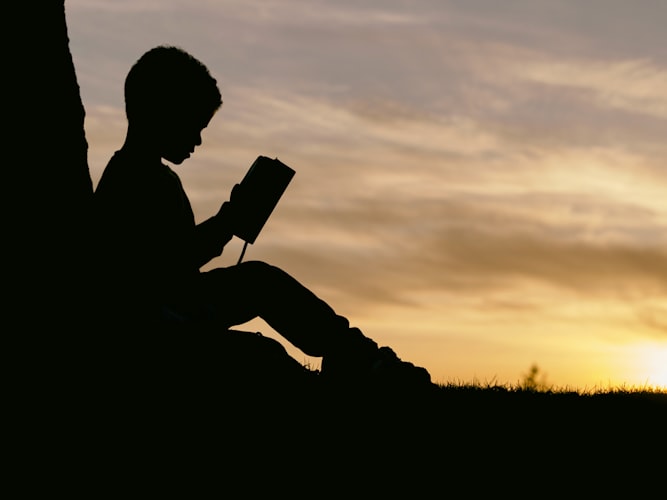Anyone who has ever lost hours of sleep consoling a crying child knows that when your kids don’t sleep well, everybody is unhappy. However, poor sleep isn’t just something that affects newborns.
While sleep apnea is generally thought of as a condition that affects older individuals, children are also susceptible to this sleep disorder. Though it is estimated that only two to three percent of children develop obstructive sleep apnea, this condition can cause significant problems.
By understanding signs and symptoms of obstructive sleep apnea in children, parents can help them get the medical care they need. Ensuring that your children get enough sleep at night will go a long way in helping them be happy and healthy.
What Are the Signs Your Child Has Sleep Apnea?

As with adults, snoring can be a sign of obstructive sleep apnea in children — but not always. Many children will snore even though they don’t have obstructive sleep apnea. However, if snoring is paired with snorts, gasps, or pauses in breathing, sleep apnea is more likely.
Other common indicators of sleep apnea in children include very heavy breathing during sleep and restless sleep. Children who develop sleep apnea will often begin sleeping in unusual positions. Some may even begin wetting the bed, even though they haven’t had this issue in the past. Other childhood sleep problems, such as night terrors and sleepwalking, may also be linked to obstructive sleep apnea.
Perhaps the biggest signs of sleep apnea are daytime fatigue and behavioral problems. Because sleep apnea keeps children from getting the deep sleep they need to feel adequately rested, they may struggle to wake up in the morning. They will likely also be extremely tired during the day, and prone to falling asleep during normal activities.
As a side effect of their fatigue, they may also have trouble concentrating and even display hyperactive behavior. Children who struggle with sleep apnea often fall asleep in class. Because they have trouble remaining focused and occasionally even act out, teachers will sometimes mistakenly make a diagnosis of ADD or ADHD. While the behavioral problems may seem similar, the reality is that they actually stem from poor sleep quality.
Notably, some studies have found that sleep apnea among children is increasing significantly as more children become overweight and obese. When a child is overweight, the buildup of fat around the neck makes the throat more likely to “collapse” during sleep, resulting in a temporary stoppage of airflow.
If you have a family history of obstructive sleep apnea, your child is more likely to develop the condition. Other risk factors for sleep apnea in children include Down syndrome, cerebral palsy, and jaw or mouth issues that result in a narrow airway.
Complications of Sleep Apnea For Children
In an article for Jersey’s Best, Kathleen O’Brien notes, “The diagnostic threshold for sleep apnea is much lower than it is for adults, for whom five episodes or fewer of apnea per hour is still considered normal. In children, anything above two episodes an hour signals a problem.”
This means that even though a child’s sleep apnea may seem less severe, it can still have a major impact on their well-being during the day. Children aren’t always the best communicators, so they may not tell parents that they feel drowsy.
Not surprisingly, children with sleep apnea will exhibit many of the same emotional troubles of adults with untreated sleep apnea. Irritability, unpredictable mood changes, and even an increased risk for anxiety and depression are likely outcomes when your child gets poor sleep night after night.
This can make school and other activities especially difficult. Students who can’t focus or become hyperactive due to sleep apnea will struggle with their classes, which can lead to self-esteem problems. Over time, consistently getting poor sleep will also put children at increased risk of serious health complications seen in adults, such as high blood pressure and additional weight gain.
Helping Your Child if You Suspect Sleep Apnea

For some children, removing the tonsils or large adenoids may be required to eliminate sleep apnea. This is generally only needed when the tonsils or adenoids are extremely large and have the potential to interfere with a child’s breathing during sleep. Other children may benefit from improved diet and exercise so they can achieve a healthy weight. And some may require CPAP therapy to control their condition.
If you are concerned that your child may have obstructive sleep apnea, your first step is to consult with a sleep specialist. By observing your child’s sleep patterns, they can determine if sleep apnea or another sleep disorder is causing problems for your child. Most importantly, they will prescribe treatment that will help control the condition.
For children under 12, this will typically require an overnight stay at a sleep lab, where specialists can perform a sleep study. A parent needs to stay with their child for this visit, which is crucial for identifying sleep disorders and their severity.
Help Your Child Get the Care They Need
If it is determined that your child needs CPAP therapy, No Insurance Medical Supplies can help. We offer a wide range of CPAP equipment from leading brands like ResMed and Philips Respironics at discounted prices that will make treatment more affordable. Financing is also available on purchases over $500.
Ensuring that your child gets quality sleep doesn’t just keep everyone in the house happier — it also promotes healthy growth and development. Don’t hesitate to help your child get the care they need so they can enjoy quality sleep.

